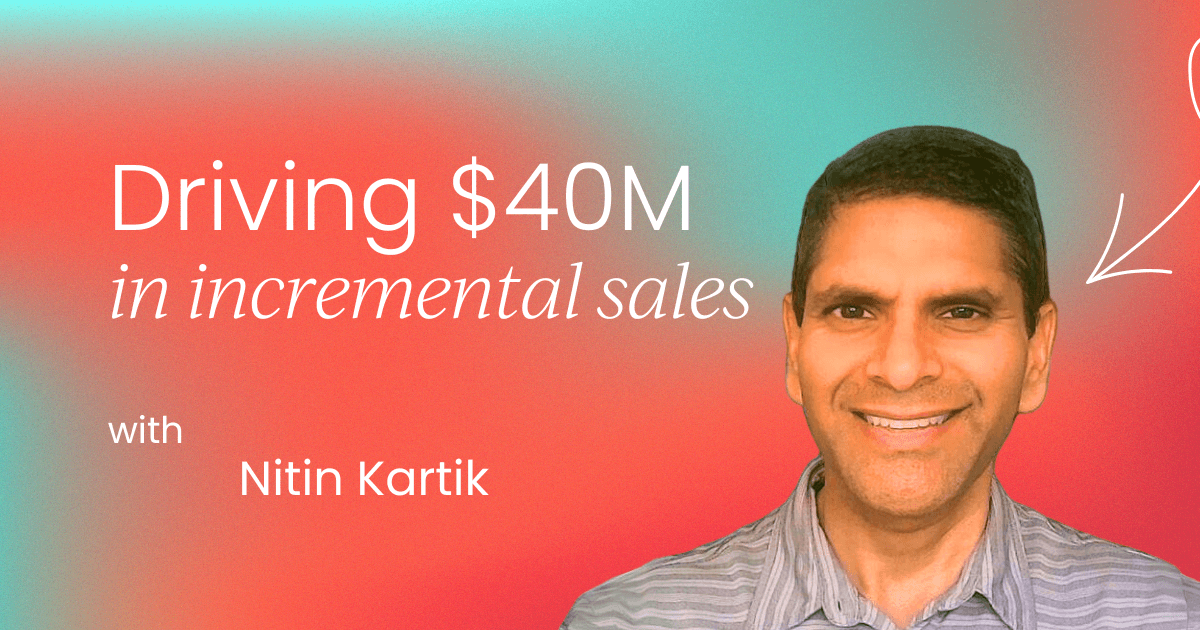Driving $40M in incremental sales is no small feat, especially in an industry as complex and competitive as the automotive sector.
Having worked in this space a few years ago, I experienced firsthand the challenges of navigating long sales cycles, managing multiple stakeholders, and distinguishing our offering in a market where innovation alone doesn’t always win the day.
In this article, I’ll share how my team and I created and captured value by leveraging data-driven thought leadership, positioning ourselves as trusted advisors, and securing over $40M in new business.
The automotive industry: A tough road to navigate
The automotive industry is notorious for long and often unpredictable sales cycles. Automakers don’t just have one decision-maker; they have many.
From procurement to engineering, marketing to legal, there are multiple layers of approval required before a vendor is selected. And automakers aren’t easily swayed by flashy new features or the latest technology.
They focus on long-term partnerships that can withstand market shifts, supply chain disruptions, and ever-evolving consumer preferences. In other words, their decision-making process is risk-averse, methodical, and focused on thought leadership as a differentiating factor.
Our challenge, then, was clear: How do we convince these automakers that our solutions weren’t just the most innovative, but also the safest and smartest long-term bet?
The power of thought leadership
Understanding the industry’s focus on thought leadership, we knew we needed to go beyond showcasing product features. While our real-time roadway traffic information technology was cutting-edge, that wasn’t enough to move the needle for many automakers.
They needed to see that we had a deep understanding of the problems they were facing and that we had the insights to help them address those challenges in a meaningful way.
We decided to tap into the wealth of data we had at our disposal. Our technology was collecting real-time traffic data from cities around the world, giving us an incredible resource to analyze and extract valuable insights. We realized that we could turn this data into a powerful tool for thought leadership.
Introducing the Traffic Index report
This is where we leveraged what we called the Traffic Index report. The report ranked cities globally based on their congestion levels, giving insights into traffic patterns, peak times, and infrastructure inefficiencies.
By positioning this as a thought-leadership piece rather than a direct sales pitch, we were able to gain traction with both media outlets and potential clients.
One of the report’s highlights was the finding that Mexico City had the worst traffic congestion in the world. Labeling Mexico City as the “Traffic Capital of the World” during that year created a headline-grabbing story that media outlets couldn’t resist.
We leveraged this bold claim to secure coverage from several major news organizations. But the real breakthrough came when the BBC reached out to interview me for a live segment on their international news channel.
Leveraging media attention for maximum impact
Being featured on BBC TV Live served as a tremendous accelerant for us. It wasn’t just the prestige of the BBC that made this impactful – it was the fact that the automakers we were targeting were watching.
The segment allowed us to showcase our expertise and the depth of our data, reinforcing our positioning as industry thought leaders.
We didn’t stop there. We used the media coverage as a launching pad for a broader marketing and sales campaign. The Traffic Index report gained credibility not only because it was based on hard data, but also because it was being discussed by top-tier media outlets.
This buzz significantly amplified our brand’s visibility in the automotive industry and opened doors to high-level conversations with decision-makers.
Winning the trust of automakers
The momentum we gained from the Traffic Index report and the subsequent media attention was crucial, but it was only the beginning. We knew that while the press helped open doors, it would be the quality of our engagements and solutions that would ultimately win over the automakers.
We invested heavily in aligning our sales strategy with the insights from the Traffic Index. This allowed us to tailor our pitches to each automaker’s specific challenges, using data-driven storytelling to address their pain points.
For example, automakers in regions with the worst traffic congestion were particularly receptive to our solutions because we had hard data proving that their cities were among the most congested. This made our technology feel indispensable to their planning and future-proofing efforts.
It’s worth noting that automakers don’t make decisions lightly, especially when it comes to multi-million-dollar deals. We had to demonstrate not just the strength of our technology, but also our ability to be a reliable, long-term partner.
By positioning ourselves as thought leaders with a deep understanding of global traffic patterns, we were able to build trust and credibility – key factors in securing the long-term relationships automakers seek.
Capturing value: Beyond innovation
As the buzz from the Traffic Index continued to grow, we knew that capturing the full value of this initiative would require a multi-team effort. It wasn’t just about getting attention; it was about converting that attention into tangible business results.
Our sales team worked tirelessly to follow up on the leads generated by the report, crafting customized solutions for each potential client.
Our marketing team ensured that the Traffic Index report remained top of mind with a sustained content campaign, and our product team collaborated with customers to fine-tune our offerings based on their feedback.
Ultimately, this collective effort paid off. We won over $40M in new business from automakers around the world, securing long-term contracts that positioned our company as a key player in the industry for years to come.
Lessons learned
Reflecting on this experience, several key takeaways have shaped my approach to product marketing and sales:
Data-driven thought leadership is powerful
Automakers – and likely many other industries – place a high value on thought leadership. But for it to be credible, it must be backed by hard data. Our Traffic Index report worked because it was rooted in real, actionable insights.
Media exposure can be a game-changer
While it’s important not to rely solely on media attention, securing high-profile coverage can significantly amplify your message and establish credibility with key decision-makers.
Cross-functional collaboration is essential
From sales to marketing to product, capturing value requires a coordinated effort. Each team played a critical role in turning the attention we garnered into real business outcomes.
Build trust by understanding your customers’ pain points
Innovation is important, but in industries with long sales cycles, like automotive, trust and credibility are even more critical. Understanding and addressing your customers' unique challenges is key to building long-term partnerships.
Final thoughts
Driving $40M in incremental sales wasn’t just a result of having a superior product. It was about positioning our brand as a thought leader, leveraging data to create value, and working collaboratively to capture that value.
In the end, it’s not just about what you sell, but how you sell it – and how you convince your customers that you’re the right partner for the long haul.


















 Follow us on LinkedIn
Follow us on LinkedIn



.svg?v=85af970283)